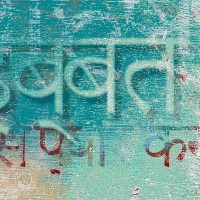Learn Indian Music and Understand the Indian Soul
An ancient guru once declared that music tells us everything about the soul of the music-maker. Learning Indian music is akin to learning all about the Indian soul and his temperament.
One very pleasant surprise is knowing that Indian music is as old as its civilization and culture, spanning thousands of years into the past. It certainly is one of the oldest in the world.
Take the Vedas, one of the most ancient recorded literary masterpieces known. This unique masterpiece had been set to music way back in its early beginnings. Today, music enthusiasts believe that the ancient music of the Vedas has a distinctive melody that is absolutely soothing.
Classical and folk music
Music in India has been grouped by the ancient scripts into two main streams known as “margi” and “desi” which roughly translate as “classical” and “folk”. The basic tenets of folk and classical music had been laid down by numerous ancient texts and developed side by side.
The two main streams of classical music are Hindustani and Carnatic. Both have the same origins and sources according to ancient scripts, although they are distinct from each other.
In the 13th and 14th centuries, a new form of Hindustani classical music emerged and became known as “khayal” which means imagination. The new style brought an entirely new approach to Hindustani classical music.
Meantime, India gave its own contribution to the world of music with “Raga” which means melody.
“Raga” is the foundation of Indian classical music as it is to the world. It is made of different combinations of “sapta swara” or seven notes, just like the notes in western music (do-re-mi, etc.).
For comparison, the octave is composed of 12 notes in western classical music. In Indian classical music, the octave has 22 notes, or “shrutis”. Swara is considered a note, whereas the shruti is the microtonal intervals between two swaras.
Instruments
Because of its long history, Indian music gave rise to a great diversity of traditions that had, in turn, spawned a variety of musical instruments. Through the ages, these instruments evolved, and the evolution can be seen in ancient cave paintings and sculptures in historic temples.
Some of these can be played solo while the others are used to accompany singers and dancers. Some of the instruments are strictly for devotional and ritualistic purposes, like the conch and the khol drum.
The instruments are broadly grouped into four types: strings, wind, percussion and bells, and cymbals and gongs.
String instruments vary according to the complexity of how they are played. The simplest is the single-string “ektara”. The most popular are the sitar, veena, sarangi and sarod. All of them are made out of dried hollowed gourd acting as the round resonator at one end.
The sitar is the most well-known all over the world alongside its famous Indian player, Ravi Shankar. The sarod has 10 main strings and 15 sympathetic strings, while the sarangi is played with a bow.
The most popular of the wind instruments is the Shahnai, a double-reed flute.
The drums are important instruments in Indian music, and there are many types. The dholak and pakhawaj are double-faced types which are struck at both sides. The tabla is known and sometimes used in Western music. The chenda are large drums that accompany religious festivals in Kerala.
The little bells, clappers, cymbals and gongs (collectively called ghana’) supply the rhythmic functions in Indian music and just as vital as the other instruments.
Just like learning the language, learning Indian music takes one to the depths of the Indian soul. The process alone is both a pleasure and a privilege for the student.




